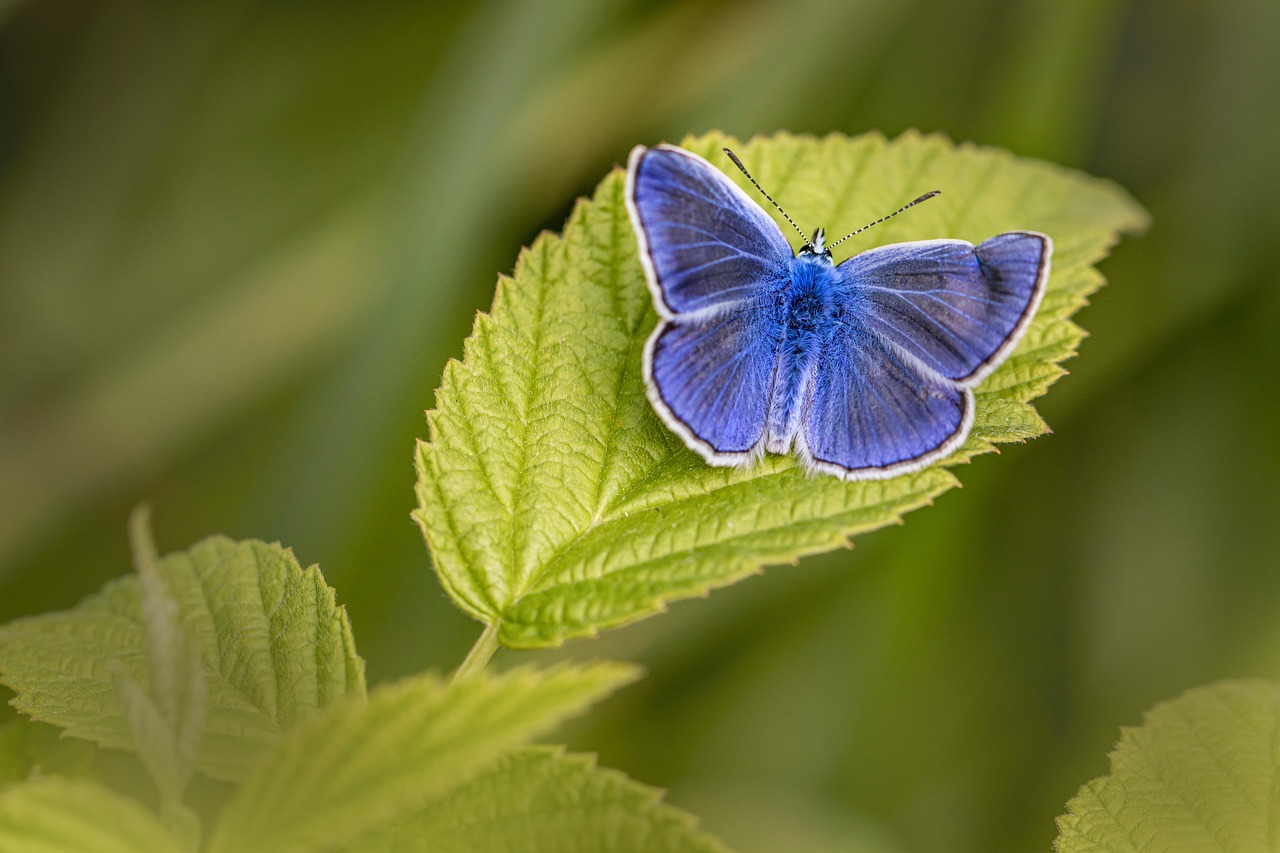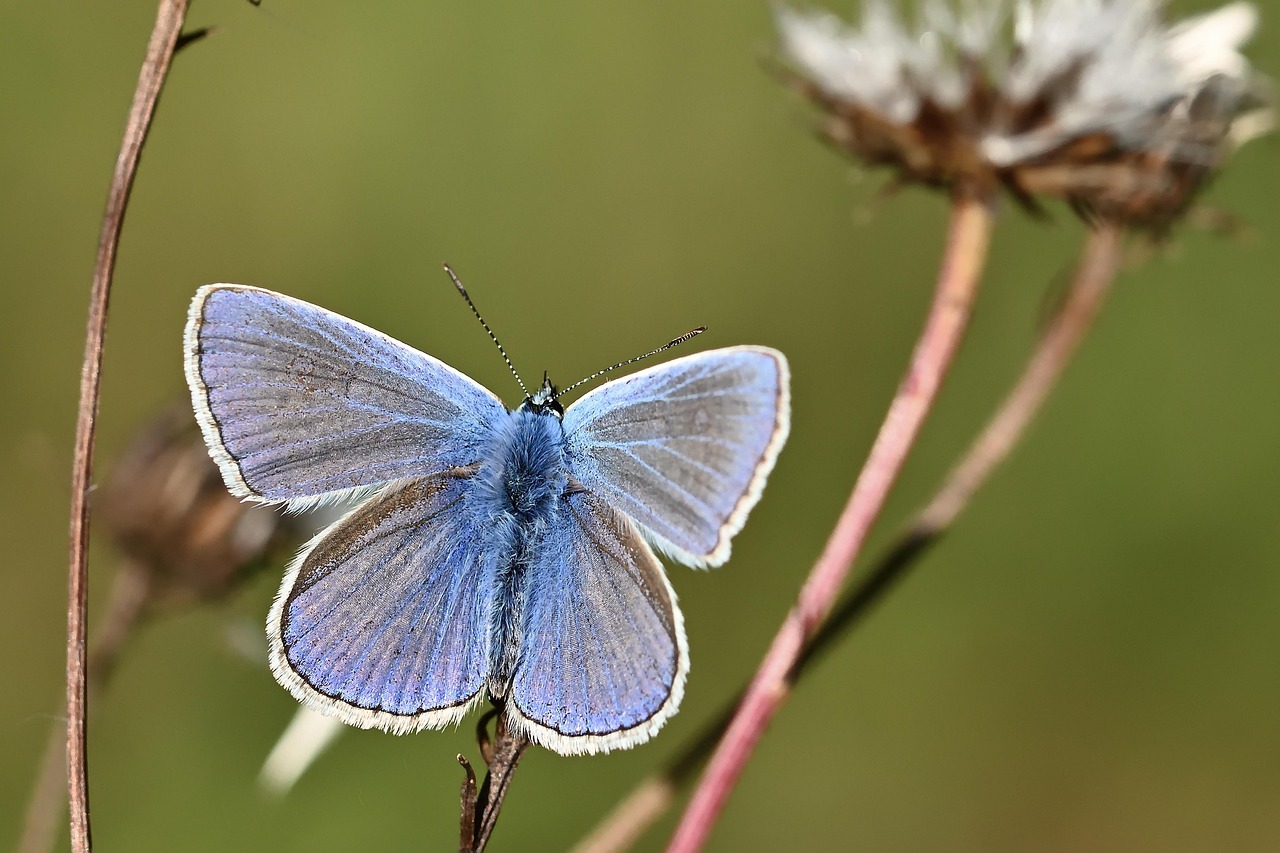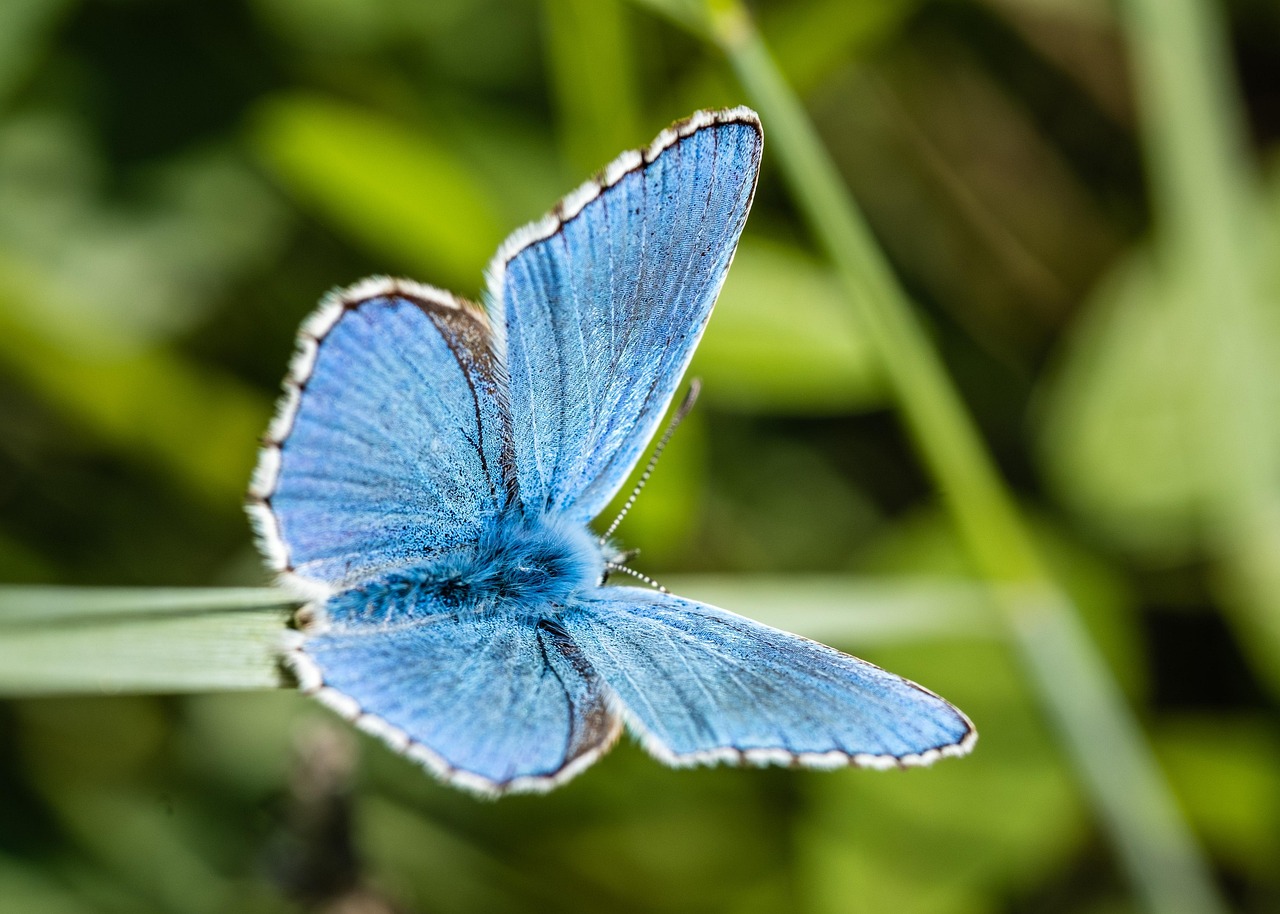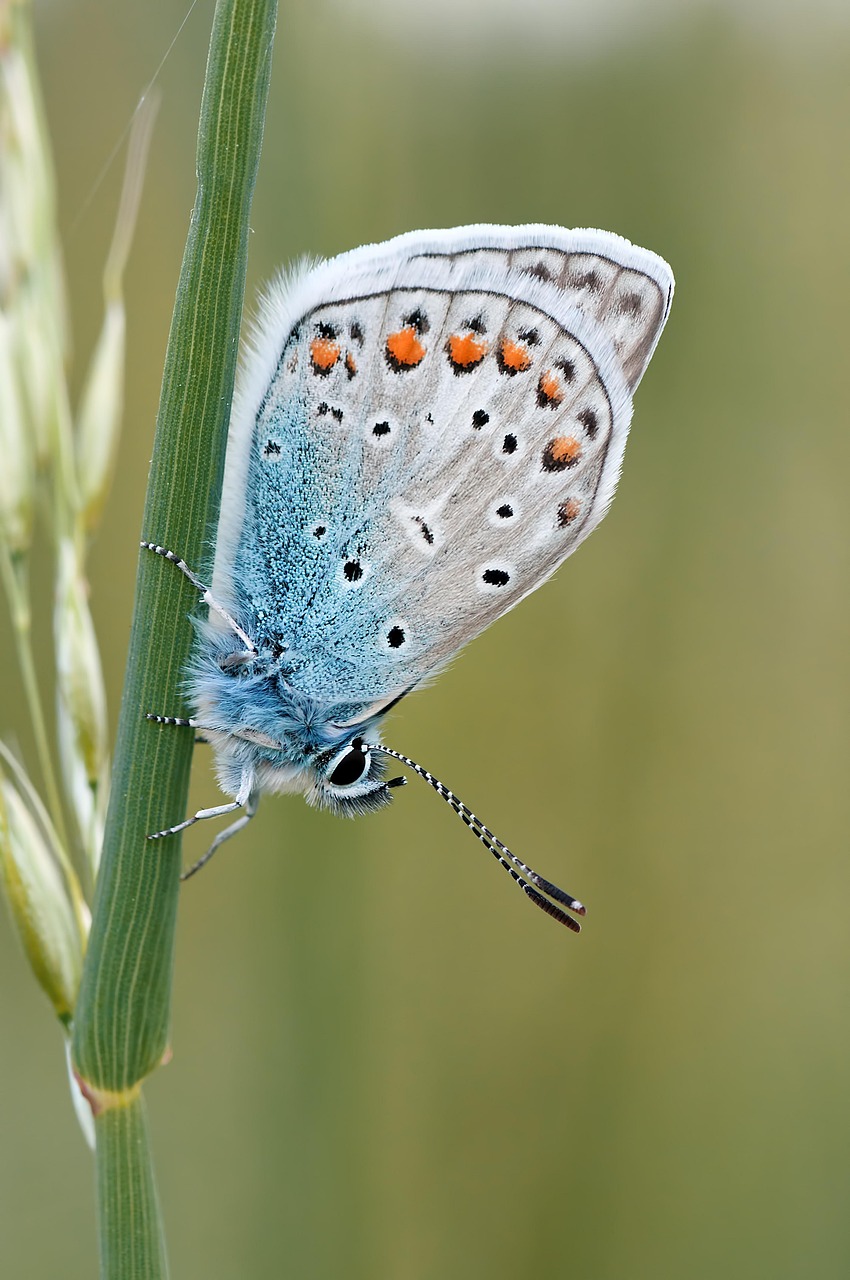The decline of the Karner Blue Butterfly is primarily due to habitat loss, fragmentation, and degradation. Factors such as urban development, agricultural practices, and invasive species have significantly reduced their native habitats, which are essential for their survival and reproduction.
Overview of the Karner Blue Butterfly

The Karner Blue Butterfly (Lycaeides melissa samuelis) is a small, vibrant butterfly notable for its striking blue wings. This species was once abundant in regions of the northeastern United States and parts of Canada. However, since the mid-20th century, their populations have severely declined, leading to their classification as an endangered species.
The Karner Blue Butterfly is closely associated with specific habitats that include open pine barrens and savannas. These ecosystems not only provide the necessary nectar sources but also support the growth of wild lupine, the primary food source for their caterpillars. Unfortunately, these habitats have been dramatically altered due to human activities.
Key Factors Contributing to the Decline
Several key factors have contributed to the decline of the Karner Blue Butterfly. Understanding these reasons is crucial for conservation efforts aimed at protecting this endangered species. The primary factors include:
- Habitat Loss: Urban development and agricultural expansion have led to the destruction of open habitats where these butterflies thrive.
- Habitat Fragmentation: Remaining habitats are often isolated, making it difficult for butterfly populations to interbreed and thrive.
- Invasive Species: Non-native plants can outcompete wild lupine and other native flora, reducing food availability for caterpillars.
- Pesticide Use: The application of pesticides in agriculture can kill not only pests but also beneficial insects, including butterflies.
- Climate Change: Shifts in climate patterns can alter habitat conditions, affecting food sources and breeding cycles.
Habitat Requirements
The Karner Blue Butterfly has a very specific set of habitat requirements. The presence of wild lupine is essential for the survival of its larval stage. Additionally, these butterflies require a sunny environment with enough open space to facilitate flight and mating rituals.
A detailed overview of their habitat requirements includes:
| Habitat Component | Description |
|---|---|
| Wild Lupine | The primary food source for Karner Blue caterpillars. |
| Open Sunlit Areas | Necessary for adult butterflies to warm up and engage in activities. |
| Low Vegetation | Allows for easy movement and visibility for mating and feeding. |
Restoration and management of these specific habitats are vital for reversing the decline of the Karner Blue Butterfly. Efforts must focus on creating suitable environments that support their lifecycle and mitigate the impacts of human activities.
Threats from Habitat Fragmentation
Habitat fragmentation presents a significant threat to the Karner Blue Butterfly. As landscapes become increasingly developed, the remaining natural areas are often isolated from one another. This isolation can lead to several critical challenges for butterfly populations.
- Reduced Genetic Diversity: Isolated populations are at risk of inbreeding, which can reduce genetic diversity. Low genetic variability can make populations more susceptible to diseases and environmental changes.
- Limited Mating Opportunities: Fragmented habitats can prevent individuals from finding mates, further reducing population numbers and reproductive success.
- Increased Vulnerability: Smaller populations are more vulnerable to extinction due to random events such as severe weather or disease outbreaks.
Efforts to connect fragmented habitats through wildlife corridors or stepping stones can help mitigate these issues, allowing for greater movement and interaction among butterfly populations.
The Role of Invasive Species
Invasive plant species pose another challenge to the survival of the Karner Blue Butterfly. These non-native species often outcompete native plants, including wild lupine, which is essential for the butterfly’s lifecycle.
Common invasive species that threaten the habitats of the Karner Blue Butterfly include:
- Knotweed: This aggressive plant can quickly fill open spaces, blocking sunlight and crowding out native flora.
- Common Buckthorn: This shrub grows densely, creating shaded areas that are unsuitable for wild lupine and other native plants.
- Garlic Mustard: This plant can alter soil chemistry and outcompete native species necessary for the butterfly’s habitat.
Effective management practices must be implemented to control these invasive species. Restoration efforts should focus on promoting the growth of native plants that support the Karner Blue Butterfly’s habitat needs.
Pesticide Impacts
The use of pesticides in agricultural practices has been linked to the decline of many beneficial insect species, including the Karner Blue Butterfly. Pesticides not only eliminate harmful pests but can also have detrimental effects on non-target species.
- Direct Mortality: Exposure to pesticides can lead to immediate death in butterflies and other non-target insects.
- Sub-lethal Effects: Even low levels of pesticide exposure can impair the butterflies’ ability to reproduce, find food, or evade predators.
- Disruption of Food Sources: Pesticides can kill off the natural food sources that butterflies rely on, further endangering their populations.
Encouraging integrated pest management (IPM) practices can help reduce pesticide usage while still protecting crop yields. This approach promotes environmentally friendly alternatives that benefit both agriculture and wildlife.
Climate Change Challenges

Climate change is an overarching threat that affects countless species, including the Karner Blue Butterfly. Changes in temperature and precipitation patterns can disrupt the delicate balance of ecosystems where these butterflies thrive.
- Altered Habitat Conditions: Changes in climate can lead to shifts in plant growth patterns, affecting the availability of wild lupine and other native flora.
- Mismatched Life Cycles: Climate change may cause decoupling between the timing of plant blooming and butterfly emergence, leading to food shortages during critical life stages.
- Increased Extreme Weather Events: More frequent droughts, floods, and storms can destroy habitats and disrupt butterfly populations.
Conservation strategies must consider the implications of climate change. Adaptive management techniques can help ensure that habitats remain resilient in the face of ongoing environmental shifts.

Conservation Efforts for the Karner Blue Butterfly
Given the numerous threats facing the Karner Blue Butterfly, a variety of conservation efforts have been implemented to help protect and restore its populations. These initiatives aim to address habitat loss, enhance breeding opportunities, and promote public awareness about the importance of preserving this species.
Habitat Restoration Projects
One of the most critical aspects of conservation for the Karner Blue Butterfly is habitat restoration. This involves rehabilitating degraded areas and enhancing existing habitats to create favorable conditions for the butterflies and their food sources.
- Removing Invasive Species: Active management of invasive plants is essential for restoring native habitats. Removing or controlling these species allows wild lupine and other native plants to thrive.
- Planting Native Flora: Introducing native plant species is crucial. This can include sowing wild lupine seeds and other nectar-producing plants that support adult butterflies.
- Creating Open Spaces: Thinning tree canopies and clearing brush can create open areas that are beneficial for the butterflies, providing sunlit spots for basking and mating.
Establishing Protected Areas
Designating protected areas is another important strategy in conservation efforts. These areas serve as safe havens for the Karner Blue Butterfly, free from many human-induced threats.
- Wildlife Refuges: Establishing wildlife refuges specifically for the Karner Blue Butterfly can help preserve critical habitats and allow for natural population growth.
- Land Management Policies: Implementing policies that restrict development and agricultural activities in sensitive areas is vital. These policies help ensure that habitats remain intact.
- Collaboration with Landowners: Engaging local landowners in conservation efforts can lead to more effective habitat preservation on private lands. Educating landowners about best practices can make a significant difference.
Public Awareness and Education
Raising public awareness about the plight of the Karner Blue Butterfly is essential for garnering support for conservation initiatives. Education plays a key role in fostering a sense of stewardship among communities.
- Community Outreach Programs: Hosting workshops, informational sessions, and guided nature walks can help educate the public about the importance of the Karner Blue Butterfly and its habitat.
- School Programs: Incorporating butterfly conservation topics into school curricula can inspire the next generation to take an interest in environmental stewardship.
- Volunteering Opportunities: Encouraging community members to participate in habitat restoration projects or butterfly monitoring programs can build local involvement and investment in conservation efforts.
Research and Monitoring

Ongoing research and monitoring are vital components of effective conservation strategies. Understanding the population dynamics and ecological needs of the Karner Blue Butterfly helps inform management decisions.
- Population Studies: Conducting studies on butterfly populations allows researchers to track trends and identify factors influencing their survival rates.
- Habitat Use Research: Investigating how butterflies utilize different habitats can help prioritize areas for restoration and protection.
- Pest Impact Assessments: Evaluating the effects of pesticides and other chemicals on butterfly populations can lead to better agricultural practices that are safer for wildlife.
The combination of habitat restoration, protective measures, public education, and scientific research forms a comprehensive approach to conserving the Karner Blue Butterfly. These efforts are essential not only for the survival of this species but also for maintaining biodiversity within its ecosystem.
Future Directions for Conservation
As we look to the future, there are several key directions for conservation efforts that can significantly enhance the chances of survival for the Karner Blue Butterfly. These strategies focus on collaboration, innovation, and adaptability in response to ongoing environmental challenges.
Collaborative Conservation Initiatives
Collaboration among various stakeholders is crucial for effective conservation. This includes partnerships between government agencies, non-profit organizations, researchers, and local communities.
- Multi-Agency Partnerships: Forming alliances between wildlife agencies and conservation groups can streamline efforts and resources, leading to more effective management strategies.
- Community Involvement: Engaging local communities in conservation decisions fosters a sense of ownership and responsibility towards protecting the Karner Blue Butterfly.
- Cross-State Collaboration: Since butterfly populations may span state lines, cooperation between neighboring states can ensure that conservation measures are consistent and effective across regions.
Innovative Technology in Conservation
The use of technology can greatly enhance conservation efforts. Innovative tools can help monitor butterfly populations and habitat conditions more effectively.
- Remote Sensing: Utilizing satellite imagery and aerial surveys can provide valuable information on habitat changes, allowing for timely interventions.
- Citizen Science: Encouraging community participation through citizen science projects can contribute to data collection, such as butterfly sightings and habitat assessments.
- Environmental DNA (eDNA): This emerging technique allows researchers to detect the presence of butterfly species in an area by analyzing genetic material from environmental samples.
Adaptive Management Practices
Implementing adaptive management practices is essential in a world where environmental conditions are constantly changing. This approach allows conservationists to adjust strategies based on new information and changing circumstances.
- Monitoring and Evaluation: Regularly assessing the effectiveness of conservation strategies ensures that resources are used efficiently and adaptively.
- Flexibility in Approaches: Being open to modifying habitat restoration techniques or management plans based on ecological feedback helps address unforeseen challenges.
- Learning from Successes and Failures: Analyzing past conservation efforts can provide insights into what works and what does not, guiding future initiatives.
Final Thoughts
The decline of the Karner Blue Butterfly serves as a poignant reminder of the broader impacts human activities have on biodiversity. Habitat loss, climate change, invasive species, and pesticide use have all contributed to this species’ precarious situation. However, through dedicated conservation efforts that encompass habitat restoration, public education, research, and collaboration among stakeholders, there is hope for the future of the Karner Blue Butterfly.
As we continue to face environmental challenges, embracing innovative solutions and adaptive management strategies will be vital. The survival of the Karner Blue Butterfly not only represents a victory for biodiversity but also reflects our commitment to preserving natural ecosystems for generations to come. Protecting this iconic species requires collective action and a shared vision for a sustainable future.
The Karner Blue Butterfly is more than just a beautiful insect; it is an integral part of our ecosystem. Ensuring its survival is essential not only for maintaining ecological balance but also for inspiring future generations to appreciate and protect the delicate connections within nature.
